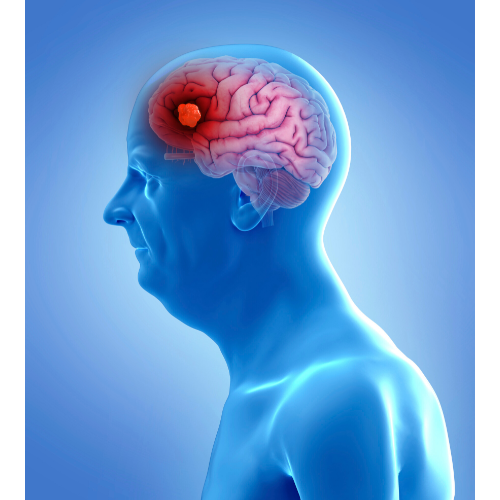Difference Between Dementia and Alzheimer’s Disease
Dementia vs. Alzheimer’s Disease
Dementia is an advanced brain disease which limits the person’s ability to do everyday chores. Some of the symptoms include issues with memory, issues with understanding, focusing and language and behavioral changes etc.
Alzheimer’s disease on the other hand is a leading cause of dementia. It starts much before the actual symptoms surface and eventually destroys the brain. The starting years of Alzheimer’s disease is called MCI – moderate cognitive impairment because it doesn’t alter everyday activities and brain functioning.
Alzheimer’s disease can be termed a s progressive brain disease and dementia is basically a result of Alzheimer’s disease.

What is Dementia?
Dementia is a broad term that encompasses a set of cognitive symptoms that significantly affect an individual’s ability to think, remember, and perform everyday activities. It is not a specific disease but rather a syndrome resulting from various conditions that lead to a decline in cognitive function. Memory loss, impaired judgment, language difficulties, and changes in personality are common manifestations of dementia.
Alzheimer’s disease, characterized by the accumulation of abnormal protein deposits in the brain, is the most prevalent cause of dementia. However, other conditions such as vascular dementia, Lewy body dementia, and frontotemporal dementia also contribute to this syndrome.
The onset is gradual and progressive, and while some symptoms can be managed, dementia is generally irreversible. Diagnosis involves clinical evaluation, cognitive tests, imaging, and ruling out other potential causes. Treatment varies depending on the underlying condition.
What is Alzheimer’s Disease?
Alzheimer’s disease is a devastating neurological condition, characterized by the gradual deterioration of cognitive functions, particularly memory and thinking skills. It is the most prevalent cause of dementia, marked by the presence of abnormal protein deposits—beta-amyloid plaques and tau tangles—in the brain, leading to the damage and death of nerve cells.
The disease gradually manifesting as mild memory loss and advancing to more severe cognitive decline, impacting daily functioning. Beyond memory impairment, individuals with Alzheimer’s may show changes in behavior, mood swings, and personality alterations.
Unfortunately, Alzheimer’s is irreversible, and while there are treatments to manage symptoms, there is currently no cure.
Similarity between Dementia and Alzheimer’s Disease
Dementia and Alzheimer’s disease share some features they are linked terms often used interchangeably. Both involve a progressive decline in cognitive function, impacting memory, communication, and the ability to perform daily activities. Individuals with either condition may experience similar symptoms, such as confusion, disorientation, and changes in behavior and personality.
Diagnosis for both often involves clinical evaluation, cognitive testing, imaging, and ruling out other potential causes. Additionally, the onset for both dementia and Alzheimer’s is gradual and characterized by a progressive worsening of symptoms over time.
While there are treatments available to manage some symptoms, both conditions are generally irreversible, highlighting the importance of early detection and intervention.
Research focuses on understanding the underlying causes, improving diagnostic methods, and developing more effective strategies to support individuals affected by these cognitive disorders.

Difference between Dementia and Alzheimer’s Disease
- Definition
Dementia
It is a brain related issue (not specifically a disease) caused by brain diseases and other conditions. It involves wide range of signs associated with decline in memory.
Alzheimer’s Disease
It is the most common type of dementia. It is also called senile dementia. It involves physical changes like shrinking in some areas of brain and widening in some areas of brain.
- Types
Dementia
- Vascular dementia
- Lewy body dementia
- Parkinson’s disease dementia
- Frontotemporal dementia
- Mixed dementia
Alzheimer’s Disease
- Early-onset Alzheimer’s
- Late-onset Alzheimer’s
3. Symptoms
Dementia
Issues with memory, focus and attention, visual perception, judgement, comprehension and reasoning.
Alzheimer’s Disease
Finding it extremely difficult to remember newly learnt information. With advancement, and disorientation, mood and behavior changes may also occur.
4. Causes
Dementia
Alzheimer’s disease, vascular dementia, Lewy body dementia, frontotemporal dementia, and others.
Alzheimer’s Disease
The cause of Alzheimer’s Disease is not known actually. However, scientific claims prove that genetic, environmental, and lifestyle components may be responsible for the development of atypical protein deposits in the brain.
5. Typical age of onset
Dementia
Sixty-five years and older
Alzheimer’s Disease
Sixty-five years but can occur as early as thirty.
6. Management
Dementia
Some forms of dementia can be reversed and managed.
Alzheimer’s Disease
It is usually fatal as in the progressive stages, victims lose their capacity to swallow and become increasingly prone to infections and other illnesses. There is no cure for Alzheimer’s disease and it is potentially irreversible.

Comparison Table
The points of difference between Dementia and Alzheimer’s Disease have been summarized as below:
| Feature | Dementia | Alzheimer’s Disease |
| Definition | General term for a set of cognitive symptoms | Specific type of dementia |
| Type of Condition | Syndrome | Disease |
| Cause | Various conditions (e.g., Alzheimer’s, vascular dementia) | Primarily Alzheimer’s pathology |
| Symptoms | Memory loss, impaired judgment, language difficulties, personality changes, etc. | Memory loss, cognitive decline, confusion, behavioral changes, etc. |
| Onset | Gradual and progressive | Gradual and progressive |
| Reversibility | Irreversible | Generally irreversible, but some symptoms may be managed |
| Pathological Features | Depends on the underlying cause (e.g., protein deposits, vascular issues) | Amyloid plaques and tau tangles in the brain |
| Diagnosis | Clinical evaluation, cognitive tests, imaging, blood tests | Clinical evaluation, cognitive tests, imaging, ruling out other conditions |
| Treatment | Depends on the underlying cause; symptomatic treatment is common | Symptomatic treatment, some medications may temporarily improve symptoms, but no cure exists |
| Prevalence | Various types contribute to overall dementia cases | Most common cause of dementia, accounting for a significant portion of cases |
Summary of Dementia and Alzheimer’s Disease:
- Dementia:
- Dementia is a general term for a set of symptoms affecting cognitive function.
- It is not a specific disease but a syndrome.
- Various conditions can cause dementia, including Alzheimer’s disease.
- Alzheimer’s Disease:
- Alzheimer’s disease is a specific type of dementia.
- It is the most common cause of dementia.
- It is characterized by specific pathological changes in the brain, including the accumulation of amyloid plaques and tau tangles.
While Alzheimer’s disease is a major contributor to dementia cases, other conditions such as vascular dementia, Lewy body dementia, and frontotemporal dementia also fall under the umbrella of dementia. Each type of dementia may have different underlying causes and symptoms, but they all involve a decline in cognitive function.
FAQ:
What are the 7 stages of dementia?
Stage 1: Absence of cognitive impairment.
Stage 2: Extremely slight cognitive deterioration.
Stage 3: Slight cognitive deterioration.
Stage 4: Moderate cognitive deterioration.
Stage 5: Moderately intense cognitive deterioration.
Stage 6: Intense cognitive deterioration.
Stage 7: Extremely intense cognitive deterioration.
How do you know if its Alzheimer’s or dementia?
Alzheimer’s disease is a type of brain disease that is not to be confused with dementia in general. The condition is linked to dementia symptoms that progressively get worse. Early signs of Alzheimer’s disease include changes in thinking, reasoning, and remembering as it affects the area of the brain involved in learning.
What are the three stages of dementia?
The three stages of dementia include – early, middle and late.
What is the life expectancy of a person with dementia?
Five-seven years after onset
What is the 3-word test for dementia?
The Mini-Cog test.
What is a quick test for dementia?
Mini-Mental Status Examination, or MMSE – This test typically takes five minutes to complete and is performed in your General Practitioner’s office. It comprises of reading, writing, orienting, and short-term memory tests and is used to screen for dementia.
What is the 2-finger test in dementia?
In this test, the patient is asked to imitate the examiner’s hands as they form a certain shape, such as interlocking their fingers in a certain way. Patients are assessed based on their ability to replicate the precise shape that the examiner has made.
What is one of the first signs of cognitive decline?
Decline in mental abilities.
Is dementia Hereditary?
No. In majority of cases, dementia is not hereditary.
What do dementia eyes look like?
A person may not always have dementia visible in their eyes, but those who do frequently experience visual impairments. It’s not known if dementia results from visual loss or vice versa.
What are the 10 warning signs of dementia?
- Recent memory loss that interferes with day-to-day functioning
- Difficulty carrying out routine chores
- Language issues
- A loss of sense of location and time
- Diminished judgement
- Hardship in thinking abstractly
- Forgetting things
- Mood and behaviour swings
- Variations in disposition
- A lack of drive
What are the first signs of having dementia?
- Increased confusion
- Inability to do every day chores
- Changes in behaviour
- Memory issues
- Reduced concentration
- Difference Between CA and CMA - February 1, 2010
- Difference Between CGA and CMA - January 30, 2010
- Difference Between Molds and Yeast - January 27, 2010
Search DifferenceBetween.net :
Leave a Response
References :
[0]Beam, C. R., Kaneshiro, C., Jang, J. Y., Reynolds, C. A., Pedersen, N. L., & Gatz, M. (2018). Differences between women and men in incidence rates of dementia and Alzheimer’s disease. Journal of Alzheimer's disease, 64(4), 1077-1083.
[1]Harciarek, M., & Jodzio, K. (2005). Neuropsychological differences between frontotemporal dementia and Alzheimer's disease: a review. Neuropsychology Review, 15, 131-145.
[2]Hendrie, H. C. (1998). Epidemiology of dementia and Alzheimer's disease. The American Journal of Geriatric Psychiatry, 6(2), S3-S18.
[3]Images from Canva
